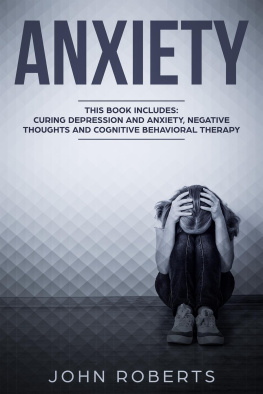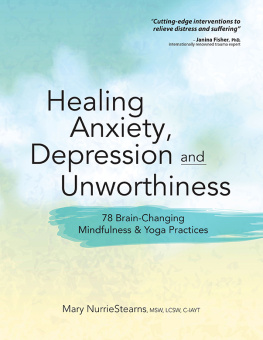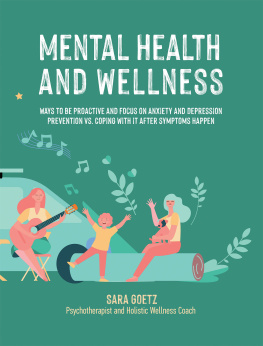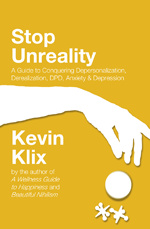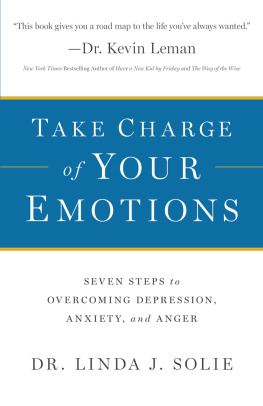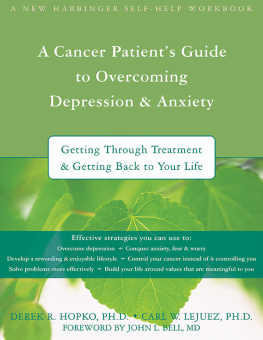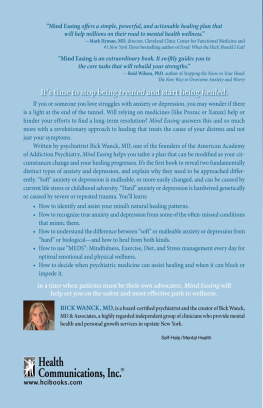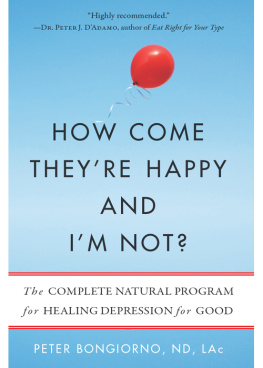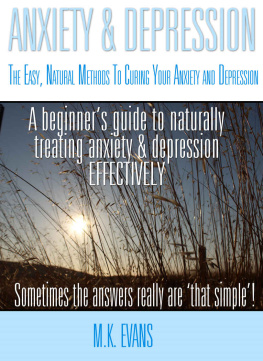Its Not Always Depression is a work of nonfiction. Names and identifying characteristics have been changed to protect the privacy of individuals involved.
As of the time of initial publication, the URLs displayed in this book link or refer to existing websites on the Internet. Penguin Random House LLC is not responsible for, and should not be deemed to endorse or recommend, any website other than its own or any content available on the Internet (including without limitation at any website, blog page, information page) that is not created by Penguin Random House.
Copyright 2018 by Change Triangle LLC
Foreword copyright 2018 by Diana Fosha
Illustrations copyright 2018 by David Lindroth Inc.
All rights reserved.
Published in the United States by Spiegel & Grau, an imprint of Random House, a division of Penguin Random House LLC, New York.
S PIEGEL & G RAU and Design is a registered trademark of Penguin Random House LLC.
LIBRARY OF CONGRESS CATALOGING-IN-PUBLICATION DATA
Names: Jacobs Hendel, Hilary, author.
Title: Its not always depression : working the change triangle to listen to the body, discover core emotions, and connect to your authentic self / by Hilary Jacobs Hendel.
Description: New York : Spiegel & Grau, [2017] | Includes bibliographical references.
Identifiers: LCCN 2017029742 | ISBN 9780399588143 (hardback) | ISBN 9780399588150 (ebook)
Subjects: LCSH: Experiential psychotherapy. | BISAC: PSYCHOLOGY / Emotions. | PSYCHOLOGY / Psychopathology / Depression.
Classification: LCC RC489.E96 J33 2017 | DDC 616.89/14dc23
LC record available at https://lccn.loc.gov/2017029742
Ebook ISBN9780399588150
randomhousebooks.com
spiegelandgrau.com
Designed by Debbie Glasserman, adapted for ebook
Cover design: Nina Tsur
v5.2_r2
ep
Contents
AS THE DEVELOPER of AEDP (accelerated experiential dynamic psychotherapy), a healing-oriented transformational model of therapy, I picked up the manuscript of Its Not Always Depression by Hilary Jacobs Hendel with a mixture of excitement and trepidation.
On one hand, excitement: Here was the potential for my work to take a quantum leap in its ability to help people change. Not only, as has happened to date, by affecting how therapists practice, and thus having an impact on the clients they see. But now, here, with this book, by going directly to the people, and sharing some trade secrets. By making the ideas of AEDP more accessible, this book has the potential to benefit many more peopleboth those in therapy (with all different kinds of therapists) and those not in therapy at all. The prospect was exhilarating.
At the same time, I felt trepidation. Here was my lifes work to date in a self-help book: Would it do AEDP justice? Or would the essence of AEDP somehow get watered down? Would the complex ideas of AEDP be turned into superficial fortune-cookie wisdom that would trivialize the years of work spent in developing a rigorous, healing-oriented transformational therapy? And if that werent enough cause for anxiety, Hilary was a colleague I felt connected to. Would I find myself in the awkward position of not liking what she wrote? Or, with peoples understanding of AEDP now out of my hands, would I have to live with an account of it that felt wrong or off?
I already felt some significant safety. Not only did I know Hilary Jacobs Hendel as a person of substance and a wonderful clinician to boot, I had also been truly wowed by two pieces she wrote for The New York Times about AEDP practice: those short, simple articles had showcased her enviable gift of capturing essence while writing simply and accessibly.
As I began reading the manuscript, my breathing started to settle. My body relaxed and my mind became engaged. What I was reading was apt and accurate. I breathed a sigh of relief! It was going to be okay.
As I kept reading, chapter after chapter, story after story, I felt moved. AEDP had a life of its own, separate from me. I had already experienced that with the contributions of my colleaguesfaculty members of the AEDP Institutewho have extended the scope of AEDP through their work. However, here was a member of the next generation, someone trained by my colleagues, who had made the work her own and was now transmitting it not only to her clients, but through this book, to the public at large. I felt a lump in my throat, and an uplifted feeling in my chest. The intergenerational transmission was on.
You might have noticed the italicized words in the preceding paragraphs. They are all words describing either emotional feelings or bodily sensations associated with emotions. Emotion and bodily sensations often reveal us to ourselves. They contain biological wisdom and communicate whats important to us and to those around us. In the pages ahead, as you get familiar with Hilary Jacobs Hendels book, you will learn to treasure the richness of emotions and what powerful guides they can be, pointing us toward doing what we need to do to heal old wounds and feel more effective and happy in our lives. Hilary does a wonderful job of teaching about emotions and the defenses behind which they hide. In her cases, she documents the toll that not being in touch with our adaptive emotions takes on us, and the benefits and advantages that well-processed emotions offer us. Those italicized words were crucial entry points into different aspects of my experience, all relevant to the task at hand.
We have a saying in AEDP: Make the implicit explicit and make the explicit experiential. In this foreword, I will make the implicit explicit and tell you about the basic AEDP principles that come to life in Hilarys clinical work. I hope to tell you enough about AEDP that you can understand the principles that underlie what you are about to experience. So here goes making the implicit explicit with respect to some fundamental AEDP principles.
Healing from the Get-Go: Transformance as the Drive to Heal
The first core idea that animates AEDP is that healing is not just a desired outcome of treatment; it is a potential that is there from the start. We are wired to heal, to right ourselves, to grow and transform. This is not just a metaphor, a way of speaking. It is what neuroplasticity is about.
When we feel safe, or safe enough, the drive to heal comes to the fore. Unlike most therapies that focus on psychopathology, AEDP doesnt focus on whats wrong: it focuses on whats right. AEDP therapists are always on the lookout for this drive to heal, for which we have a special name: transformance. This is how I describe transformance, the motivating force of therapy:
People have a fundamental need for transformation. We are wired for growth and healing. And we are wired for self-righting, and resuming impeded growth. We have a need for the expansion and liberation of the self, the letting down of defensive barriers, and the dismantling of the false self. We are shaped by a deep desire to be known, seen, and recognized, as we strive to come into contact with parts of ourselves that are frozen.
Whats beautiful, as well as convenient, is that the phenomena of healing are invariably accompanied by vitality and energy, which have clear somatic affective markers. These markers help us track and they help us see the manifestations of transformance and the strivings toward healing and well-being. And when we recognize those strivings in people, they feel seen.


